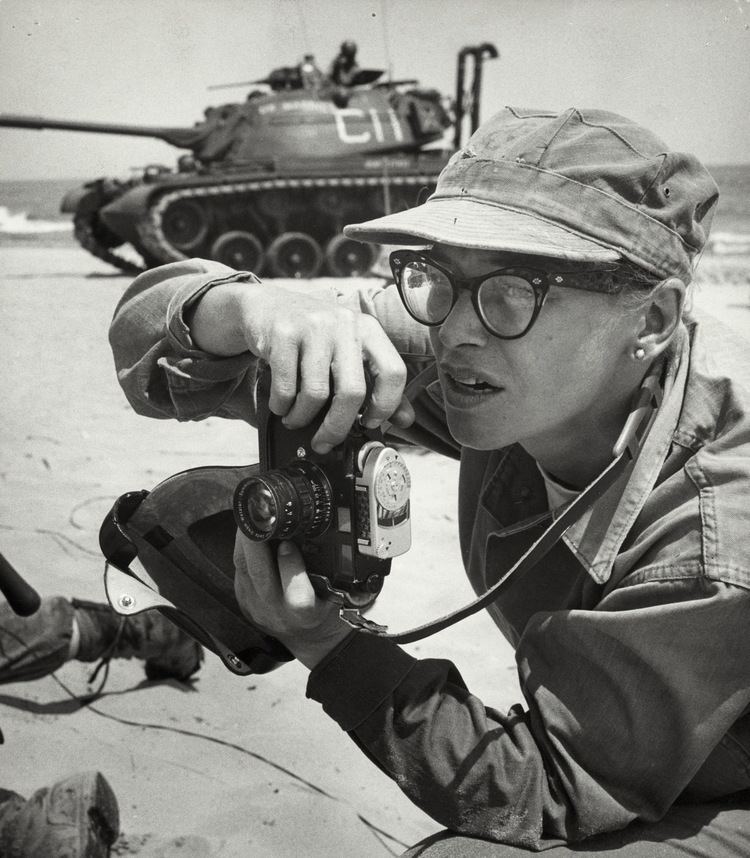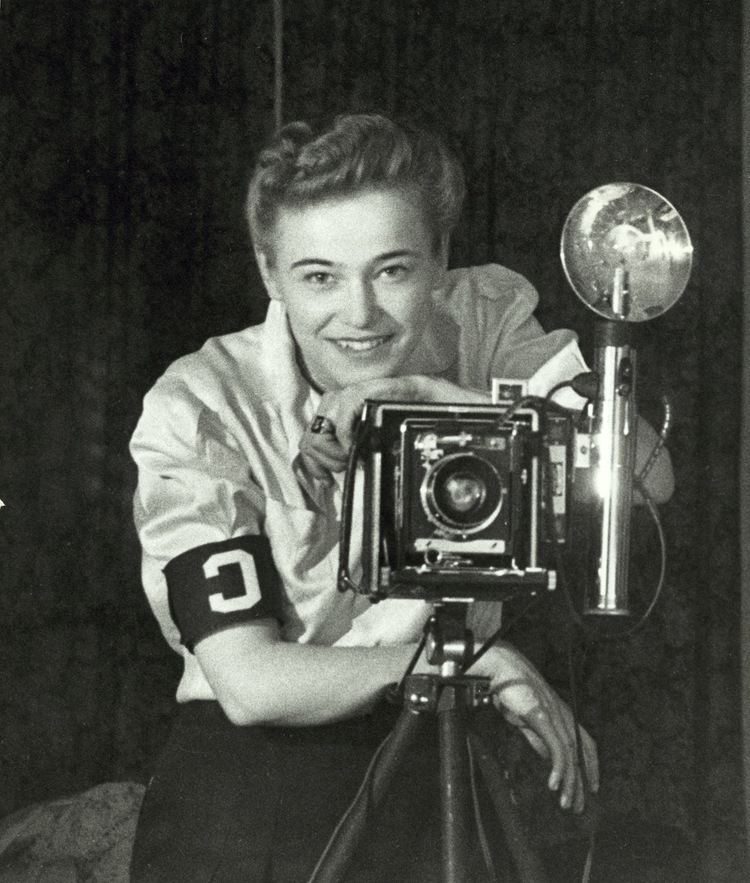Name Dickey Chapelle Role Correspondent | Died November 4, 1965, Vietnam | |
 | ||
Books What's a Woman Doing Here?: A Reporter's Report on Herself | ||
The story of dickey chapelle
Dickey Chapelle, born Georgette Louise Meyer (March 14, 1919 – November 4, 1965), was an American photojournalist known for her work as a war correspondent from World War II through the Vietnam War.
Contents
- The story of dickey chapelle
- Behind the pearl earrings the story of dickey chapelle combat photojournalist program
- Early life
- Breakthrough
- Later life
- Awards
- Legacy
- Works
- References

Behind the pearl earrings the story of dickey chapelle combat photojournalist program
Early life

Chapelle was born in Milwaukee, Wisconsin and attended Shorewood High School. By the age of sixteen, she was attending aeronautical design classes at MIT. She soon returned home, where she worked at a local airfield, hoping to learn to pilot airplanes instead of designing them. However, when her mother learned that she was also having an affair with one of the pilots, Chapelle was forced to live in Florida with her grandparents.

Eventually, she moved to New York City, and met her future husband, Tony Chapelle, and began working as a photographer sponsored by Trans World Airlines. She eventually became a professional, and later, after fifteen years of marriage, divorced Tony, and changed her first name to Dickey.
Breakthrough
Despite her mediocre photographic credentials, during World War II Chapelle managed to become a war correspondent photojournalist for National Geographic, and with one of her first assignments, was posted with the Marines during the battle of Iwo Jima. She covered the battle of Okinawa as well.
After the war, she traveled all around the world, often going to extraordinary lengths to cover a story in any war zone. During the Hungarian Revolution of 1956, Chapelle was captured and jailed for over seven weeks. She later learned to jump with paratroopers, and usually travelled with troops. This led to frequent awards, and earned the respect of both the military and journalistic community. Chapelle "was a tiny woman known for her refusal to kowtow to authority and her signature uniform: fatigues, an Australian bush hat, dramatic Harlequin glasses, and pearl earrings."
Later life
Despite early support for Fidel Castro, Chapelle was an outspoken anti-Communist, and loudly expressed these views at the beginning of the Vietnam War. Her stories in the early 1960s extolled the American military advisors who were already fighting and dying in South Vietnam, and the Sea Swallows, the anticommunist militia led by Father Nguyen Lac Hoa. Chapelle was killed in Vietnam on November 4, 1965 while on patrol with a Marine platoon during Operation Black Ferret, a search and destroy operation 16 km south of Chu Lai, Quang Ngai Province, I Corps. The lieutenant in front of her kicked a tripwire boobytrap, consisting of a mortar shell with a hand grenade attached to the top of it. Chapelle was hit in the neck by a piece of shrapnel which severed her carotid artery; she died soon after. Her last moments were captured in a photograph by Henri Huet. Her body was repatriated with an honor guard consisting of six Marines, and she was given full Marine burial. She became the first female war correspondent to be killed in Vietnam, as well as the first American female reporter to be killed in action.
